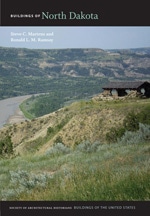
This farm is an outstanding example of farm-stead architecture from the settlement period to the Great Depression. One of the few architect-designed houses in this rural part of the state, the house displays an impressive collection of stylistic motifs and textural finishes. It has a cut-stone foundation, horizontal wood siding, and a hipped roof intersected by crossing gables. Prominent dentils and modillions define the eaves. A porch extends from the east and south sides of the house, curving to follow the contours of an interior parlor. The porte-cochere is on the north side below one of two large Palladian windows. Balustraded balconies above the porches and porte-cochere are ornamented with Ionic columns and a simple frieze board. An unusual banked barn (there are fewer than a hundred in the state) is built into the side of a hill, affording wagon access to both levels. Here, the banked side is on the short side, rather than on the long side as is customary. Ventilating bellcast cupolas cap the roof. The barn mow contains an enclosed carriage house.














